"Portrait Of Napoleon In Coronation Costume, Drawing After GĂ©rard "
Portrait of Napoleon in coronation costume, black chalk drawing after the painting by Baron GĂ©rard (photo).Louis-Philippe period frame in wood and gilded stucco, accidents and losses.
Frame 63X55 cm
Born in 1770 in Rome, François Pascal Simon Baron GĂ©rard received his artistic training in Paris with the sculptor Augustin Pajou, then the painter Nicolas-Guy Brenet and finally Jacques Louis David. Thanks to the latter's protection, he exhibited at the Salon in 1791. He quickly obtained a studio at the Louvre and was thus able to devote himself fully to his art. He was noticed in 1800 by the Bonapartes who ordered him. While Jacques Louis David was responsible for representing the First Consul crossing the Grand-Saint-Bernard pass, the official image of a victorious Napoleon, GĂ©rard distinguished himself in works relating more to the intimate sphere. He thus responded to orders from Madame MĂšre, Joachim Murat and his wife Caroline, and exhibited at the Salon a full-length portrait of JosĂ©phine in indoor attire. In 1805, he acquired the rank of official portrait painter of the Empire and produced some history paintings, but above all portraits and official effigies of the imperial family and then of European dignitaries, which earned him the nickname "painter of kings , king of painters. GĂ©rard's ability to convey the personality of his models, while focusing on the finesse of the line and the illusionistic transcription of materials, contribute to his success. The setting, sometimes intimate, sometimes grandiose, very often occupies a symbolic place and almost as important as the subject. Among the prestigious commissions given to him, in 1804 GĂ©rard obtained the privilege of painting the official portrait of the Emperor in coronation costume. Indeed, from the coronation, Napoleon wanted to disseminate his new image as Emperor. He then turned to the prestigious artists of his time: Jean-Auguste-Dominique Ingres, Robert LefĂšvre, and François GĂ©rard. The results differ from one portrait to another, with each artist providing their interpretation of the new regime in place. GĂ©rard's version, commissioned to adorn Talleyrand's hotel, then Minister of External Relations, completed in 1805, was chosen by Napoleon to make his official portrait. Thus, from December 22, 1804, the Minister of the Interior Champagny ordered a series of replicas intended for members of the imperial family, dignitaries of the regime, diplomatic or consular residences abroad, as well as to serve as a model for Gobelins and SĂšvres factories to create tapestries or ceramics. The copies are made by GĂ©rard himself and the collaborators in his workshop, most often students. The format and framing differ depending on the destination and use: at the foot, at the bust or even at mid-leg. Between Ingres' version which shows an almost Olympian Napoleon and the rather clumsy treatment of LefĂšvre, GĂ©rard gives us an image of a solemn but incarnate emperor. This portrait is all the more successful as we know that Napoleon did not pose. Artists therefore had to draw inspiration from existing engravings or portraits. GĂ©rard worked on models, but he nevertheless knew how to give a human and noble dimension to the new Emperor. The balance between sacred and reality is respected by GĂ©rard, which is why his version will be preferred to the others. In the full-length portrait, the Emperor adopts a three-quarter pose, inherited from the portraits of the Bourbon kings, like the Portrait of Louis XIV in coronation costume, painted by Hyacinthe Rigaud in 1701. Although the framing is tight Half-length on this version, we find all the elements that made this portrait so successful. Napoleon wears the grand coronation costume designed by Jean-Baptiste Isabey and Charles Percier, composed of a long ivory satin dress embroidered with plant friezes in gold thread and a large purple velvet coat lined with ermine, also embroidered Golden. This âgrand clothingâ is distinct from the outfit of the monarchs of the Ancien RĂ©gime. Indeed, the purple color of the coat replaces royal blue and is linked to the tradition of the Roman emperors. On this coat, we can distinguish the bee, olive, oak and laurel branches intertwined and encircling the number N. The regalia, traditional symbols of the monarchy, are readapted and coexist with the new insignia of power. These ornaments are the work of the greatest goldsmiths of the early 19th century. The golden laurel crown - also inherited from ancient iconography -, the large necklace of the Legion of Honor, the scepter, the hand of justice and the imperial globe placed on the cushion in the background, were all designed by Martin-Guillaume Biennais, official goldsmith to the Emperor. The coronation sword, whose blade was made by the Versailles arms factory directed by Nicolas-NoĂ«l Boutet, is set by Marie-Etienne Nitot with precious stones. On the shell, find the famous RĂ©gent diamond. The handle and gold fittings of the tortoiseshell scabbard were entrusted to the goldsmith Jean-Baptiste-Claude Odiot. In the background, we can see the back of the throne created by the cabinetmaker Jacob-Desmalter based on a design by Percier and Fontaine for the Tuileries Palace. Paying great attention to details and using the glazing technique, GĂ©rard perfectly transcribes the volumes and the nobility of the materials: the refinement of the fabrics which make up the grand costume, the reflections in the globe, the brilliance of the Regent. All these elements combine to create a composition which gives Napoleon I a halo of prestige inherited from the greatest kings of France, while giving him a new symbolism. Other versions from GĂ©rard's workshop are kept in several European museums but also in private collections. In France, five copies are kept in public collections and visible at the Louvre Museum, the ChĂąteau de Malmaison, the ChĂąteau de Fontainebleau, the ChĂąteau de Versailles as well as the Palais Fesch in Ajaccio.




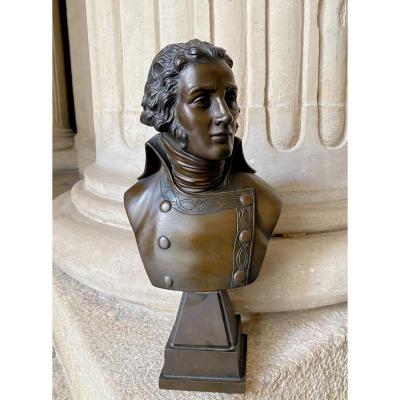
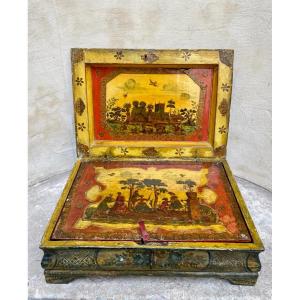
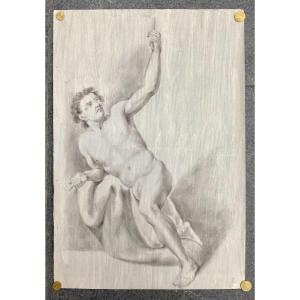




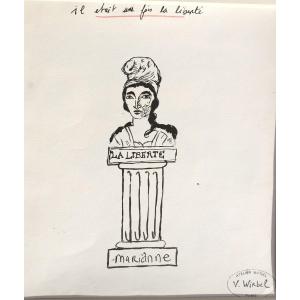

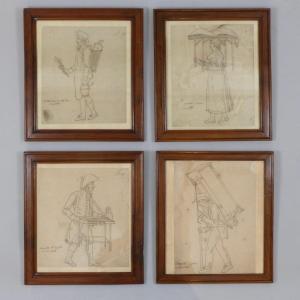

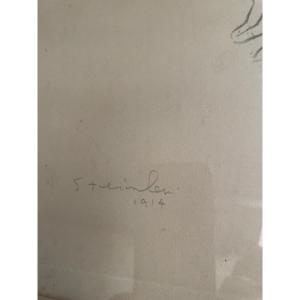




 Le Magazine
Le Magazine Rivista Artiquariato
Rivista Artiquariato TRĂSORS magazine
TRĂSORS magazine










